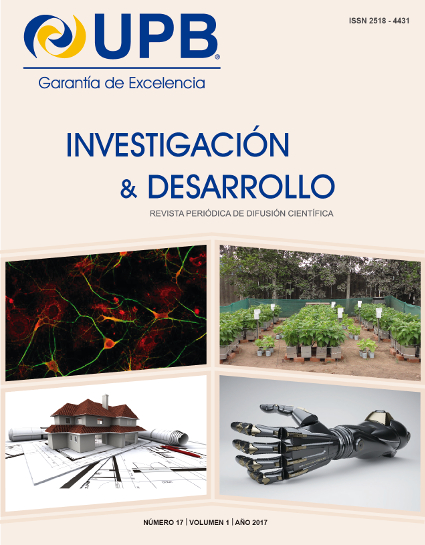DEGRADATION OF SYNTHETIC ORGANIC DYES IN SOLUTION BY FERRATE – HYPOCHLORITE OR CALCIUM HYPOCHLORITE
Palabras clave:
Ferrate, Synthetic Organic Dyes, Hipochlorite, COD RemovalResumen
This study investigated the use of ferrate – hypochlorite solution or solid Ca(OCl)2 as treatment options to remove color and COD from solutions of the synthetic organic dyes: Reactive blue 19, Allura red and Reactive black 5. It was found that doses around 1000 ppm Ca(OCl)2 had color removal efficiencies around 90 % for all the dyes after 15 minutes reaction time; this treatment had a COD removal efficiency of 97 % for azo dye Allura red. The ferrate – hypochlorite (0.06 mM - <400 ppm) treatment resulted in a 50% color removal for Reactive blue 19 dye after 1 hour reaction time. The COD removal of Reactive blue 19 dye was improved from 40% to 84% when the ferrate – hypochlorite solution was used.Descargas
Referencias
C. O’Neill, F. R. Hawkes, D. L. Hawkes, N. D. Lourenço, H. M. Pinheiro, and W. Delée, “Colour in textile effluents – sources, measurement, discharge consents and simulation: a review,” J. Chem. Technol. Biotechnol., vol. 74, no. 11, pp. 1009–1018, 1999.
S. Arslan, M. Eyvaz, E. Gürbulak, and E. Yüksel, “A Review of State-of-the-Art Technologies in Dye-Containing Wastewater Treatment – The Textile Industry Case,” in Textile Wastewater Treatment, E. P. A. Kumbasar and A. E. Körlü, Eds. Rijeka: InTech, 2016.
S. Barışçı, O. Turkay, and A. Dimoglo, “Review on Greywater Treatment and Dye Removal from Aqueous Solution by Ferrate (VI),” in Ferrites and Ferrates: Chemistry and Applications in Sustainable Energy and Environmental Remediation, pp. 349–409.
M. A. Oturan and J.-J. Aaron, “Advanced Oxidation Processes in Water/Wastewater Treatment: Principles and Applications. A Review,” Crit. Rev. Environ. Sci. Technol., vol. 44, no. 23, pp. 2577–2641, Dec. 2014.
M. Antonopoulou, E. Evgenidou, D. Lambropoulou, and I. Konstantinou, “A review on advanced oxidation processes for the removal of taste and odor compounds from aqueous media,” Water Res., vol. 53, pp. 215–234, 2014.
A. Babuponnusami and K. Muthukumar, “A review on Fenton and improvements to the Fenton process for wastewater treatment,” J. Environ. Chem. Eng., vol. 2, no. 1, pp. 557–572, 2014.
A. Zaconeta Piva and R. Escalera vasquez, “Desarrollo de un sistema de reciclaje de aguas residuales textiles coloreadas mediante la utilización de un fotoreactor solar,” Investig. Desarro., vol. 1, no. 1, pp. 36–47, 2010.
J.-Q. Jiang, “The Role of Ferrate(VI) in the Remediation of Emerging Micro Pollutants,” Procedia Environ. Sci., vol. 18, pp. 418–426, 2013.
J.-Q. Jiang, “Advances in the development and application of ferrate(VI) for water and wastewater treatment,” J. Chem. Technol. Biotechnol., vol. 89, no. 2, pp. 165–177, 2014.
J. G. Ibanez, M. Tellez-Giron, D. Alvarez, and E. Garcia-Pintor, “Laboratory Experiments on the Electrochemical Remediation of the Environment. Part 6: Microscale Production of Ferrate,” J. Chem. Educ., vol. 81, no. 2, p. 251, 2004.
V. K. Sharma, L. Chen, and R. Zboril, “Review on High Valent FeVI (Ferrate): A Sustainable Green Oxidant in Organic Chemistry and Transformation of Pharmaceuticals,” ACS Sustain. Chem. Eng., vol. 4, no. 1, pp. 18–34, 2016.
S. J. DeLuca, A. C. Chao, and C. Smallwood, “Ames Test of Ferrate Treated Water,” J. Environ. Eng., vol. 5, no. 109, pp. 1159–1167, 1983.
K. L. D. Katiyar, A. Singh, P. Bose, and V. Dutta, “Similarities of Trihalomethanes Formation during Chlorination of Diluted Waste Water and Ganga River Water at Kanpur,” Pollut. Res., vol. 34 (2), no. AUGUST, pp. 289–296, 2015.
G. Li, N. Wang, B. Liu, and X. Zhang, “Decolorization of azo dye Orange II by ferrate(VI)–hypochlorite liquid mixture, potassium ferrate(VI) and potassium permanganate,” Desalination, vol. 249, no. 3, pp. 936–941, 2009.
G. R. Xu, Y. P. Zhang, and G. B. Li, “Degradation of azo dye active brilliant red X-3B by composite ferrate solution,” J. Hazard. Mater., vol. 161, no. 2, pp. 1299–1305, 2009.
M. Massoudinejad, M. Ghaderpoori, and M. Rezazadeh Azari, “The removal of COD and Color from Textile Industry by Chlorine Hypochlorite,” Int. J. Adv. Sci. Technol., vol. 76, pp. 35–42, 2015.
D. C. dos Santos et al., “Application of Carbon Composite Adsorbents Prepared from Coffee Waste and Clay for the Removal of Reactive Dyes from Aqueous Solutions,” J. Braz. Chem. Soc., vol. 26, pp. 924–938, 2015.
D. R. Waring and G. Hallas, Eds., The Chemistry and Application of Dyes. New York: Plenum Press, 1990.
M. H. V Werts et al., “Quantitative full-colour transmitted light microscopy and dyes for concentration mapping and measurement of diffusion coefficients in microfluidic architectures,” Lab Chip, vol. 12, no. 4, pp. 808–820, 2012.
M. S. Roriz, J. F. Osma, J. A. Teixeira, and S. Rodríguez Couto, “Application of response surface methodological approach to optimise Reactive Black 5 decolouration by crude laccase from Trametes pubescens,” J. Hazard. Mater., vol. 169, no. 1, pp. 691–696, 2009.
C. Li, X. Z. Li, and N. Graham, “A study of the preparation and reactivity of potassium ferrate,” Chemosphere, vol. 61, no. 4, pp. 537–543, 2005.
M. Celebi, M. Z. Akdeste, and Y. Hüseyin, “Determination of decolorization properties of Reactive Blue 19 dye using Horseradish Peroxidase enzyme,” Turkish J. Biochem., vol. 2, no. 37, pp. 200–206, 2012.
A. M. Dessouki and S. E. Abdel-Aab, “Radiation Degradation of some Commercial Dyes in Wastewater,” in International Conference on Hazardous Waste: Source effect and Management, 1998, pp. 1331–1345.
S. Chakrabarti and B. K. Dutta, “Photocatalytic degradation of model textile dyes in wastewater using ZnO as semiconductor catalyst,” J. Hazard. Mater., vol. 112, no. 3, pp. 269–278, 2004.
Descargas
Publicado
Número
Sección
Licencia
Reconocimiento-NoComercial-CompartirIgual
CC BY-NC-SA
Esta licencia permite a otros entremezclar, ajustar y construir a partir de su obra con fines no comerciales, siempre y cuando le reconozcan la autoría y sus nuevas creaciones estén bajo una licencia con los mismos términos.
Los autores pueden realizar acuerdos contractuales adicionales separados para la distribución no exclusiva de la versión publicada del artículo publicado en la revista (por ejemplo, publicarlo en un repositorio institucional o en un libro), sujeto a un reconocimiento de su publicación inicial en esta revista
